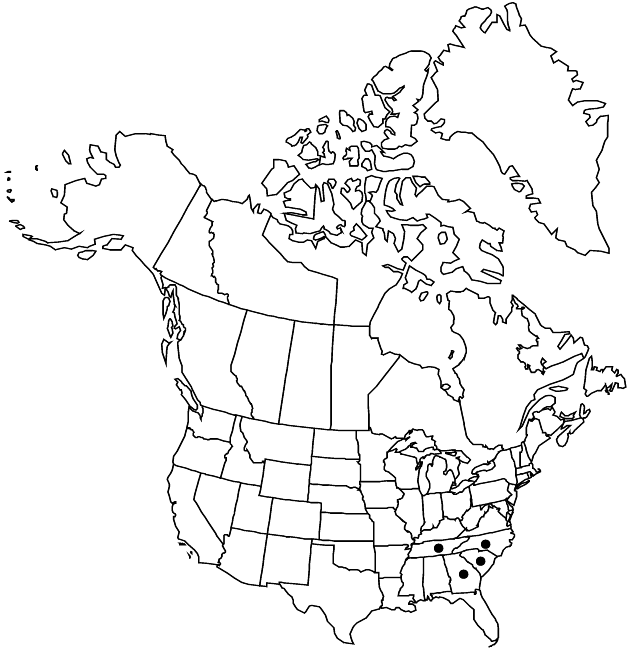Krigia montana
Gen. N. Amer. Pl. 2: 127. 1818.
Perennials, 20–50 cm; caudices fibrous-rooted, stout, often branched. Stems 1–5+, usually decumbent proximally, ascending and branched distally, glabrous, eglandular. Leaves basal and cauline; petiolate; blades narrowly oblanceolate, apices acute, faces glabrous, eglandular; basal 5–30 cm, margins denticulate to pinnately lobed, lobes broad and blunt or narrow, curving, and acute; cauline becoming linear and reduced distally. Heads (2–) 3–20+. Peduncles terminal on leafy branches or in axils of cauline leaves and bracts (first sometimes scapiform from basal rosettes; usually glabrous, sometimes lightly glandular distally). Involucres 7–12 mm. Phyllaries 8–16, reflexed in fruit, lanceolate, midveins obscure, apices acute, glabrous. Florets 25–60; corollas yellow, 15–25 mm. Cypselae brown, columnar, 2–2.8 mm, 12–15-ribbed; pappi of 10–16 outer scales 0.5–0.8 mm plus 14–20, scabrous inner bristles 4.5–6 mm. 2n = 20.
Phenology: Flowering May–Sep.
Habitat: Gravelly soils and wet mossy crevices on granite cliffs, rock slides, rocky road banks, and heath balds
Elevation: 700–1900 m
Distribution

Ga., N.C., S.C., Tenn.
Discussion
Krigia montana is known from the high-elevation Appalachian ecosystem. In Buncombe County, North Carolina, there is an established population of the hexaploid hybrid between K. montana and K. biflora, Krigia ×shinnersiana K. L. Chambers (2004). It has been studied extensively on a molecular basis (K. J. Kim and T. J. Mabry 1991; Kim et al. 1992b, 1992c; Kim and R. K. Jansen 1994). Chloroplast and nuclear DNA data indicate that K. biflora was the maternal parent and K. montana the paternal parent. Krigia ×shinnersiana is leafy-stemmed but shows less branching than is typical of K. montana, and its flower color is intermediate between the orange of K. biflora and the yellow of K. montana. The plants propagate extensively by root buds as in the maternal parent.
Selected References
None.
Lower Taxa
"fine" is not a number."broad" is not a number.